What's New
Displaying results 4261 - 4270 of 4914
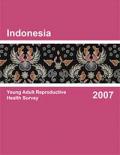
Resource | Publications,
The 2007 Indonesia Young Adult Reproductive Health Survey (IYARHS) is the second national survey on Adolescent Reproductive Health (ARH) in Indonesia. The survey is a sub-sample of the 2007 Indonesia Demographic and Health Survey (IDHS) which was carried out through cooperation between the National Family Planning Coordinating Board and Central Board of Statistics (BPS) and Ministry of Health of the Republic of Indonesia.
In the 2007 Indonesia Young Adult Reproductive Health Survey (IYARHS), a total of 19,311 young adults were interviewed; 10,830 males and 8,481 females. Sixty-five percent of survey respondents are age 15-19 and 35 percent are age 20-24. There are more males than females in the sample (56 and 44 percent, respectively). These are the same proportions as in the general unmarried population age 15-24. Female respondents are more likely to live in urban areas (56 percent), while male respondents are more likely to live in rural areas (52 percent). Unmarried women are more likely to live in urban areas than men.
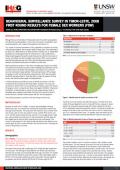
Resource | Fact Sheets,
In 2008 a behavioural surveillance survey of female sex workers in Dili was conducted by the University of New South Wales, Australia. The survey was conducted on behalf of the Timor-Leste Ministry of Health as part of the national HIV program, which is funded by the Global Fund Against HIV/AIDS, Tuberculosis and Malaria. It collected data on sexual and drug-using practices; levels of knowledge about sexually transmissible infections (STIs) and HIV; access to medical services, attitudes towards people with HIV; and demographics.

Resource | Publications,
The government of Maldives recognizes the central role of surveillance in response to HIV. The 2006 Situational Assessment of HIV in the country found that one of the gaps in the national response to HIV and AIDS was the lack of an active surveillance system that would serve as early warning device to the epidemic state of the country. The Biological and Behavioral Survey (BBS) is intended to provide not only the baseline data for evidence-based program planning, monitoring, and evaluation but also a window on the potential for an emerging epidemic in the Maldives.
The general objective of the 2008 BBS was to provide baseline data for a better understanding of the situation of the most-at-risk populations (MARPs), including the most-at-risk adolescents (MARA) in the Maldives.

Resource | Publications,
Bhutan along with 189 other member states adopted the United Nations Millennium Declaration in 2000, committing to a new global partnership to reduce extreme poverty and setting out a series of time-bound targets with a deadline of 2015 that are known as the Millennium Development Goals (MDGs). The draft Tenth Five Year Plan of Bhutan reflects a strong MDG orientation with poverty reduction as the key objective and the MDGs have been advocated effectively to mobilize social support for the goals and promote wide national ownership.
This publication, Bhutan's Progress: Midway to the Millennium Development Goals, highlights Bhutan's achievements of the MDGs and the targets up to 2008, challenges in achieving some of the targets and for the first time, analyses the relationship between Bhutan’s development philosophy of Gross National Happiness (GNH) and the MDGs.

Resource | Presentations,
National Center for HIV/AIDS, Dermatology and STD presented on November 14, 2008 the HIV prevalence data among drug users in Cambodia.
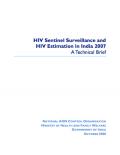
Resource | Publications,
HIV Sentinel Surveillance is an annual exercise conducted to monitor the trends and levels of HIV epidemic among different population groups in the country. It is implemented with the support of two national institutes and five regional public health institutes of India. The methodology adopted is Consecutive Sampling at the service facilities and Unlinked Anonymous Testing after removing all the identifiers.
HIV Sentinel Surveillance 2007 was conducted at 1134 sentinel sites – 646 sites among the general population and 488 sites among the high-risk group population (FSW, MSM, IDU, migrants, and truckers). A total of 3,58,797 samples were tested during HIV Sentinel Surveillance 2007.
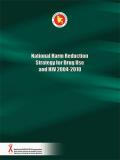
Resource | Publications,
In Bangladesh it is widely acknowledged that drug use is increasing and accompanied with this are various risk behaviors. Particular concerns are injecting drug use and adverse health consequences such as blood-borne viruses specifically HIV/AIDS and Hepatitis C.
In 2000-2001 the HIV prevalence rate among injecting drug users (IDUs) ranged from 1.4 - 1.7%. By 2005-2006 the HIV prevalence had increased to 7 % among IDUs in Central Bangladesh. The National Strategic Plan for HIV/AIDS 2004 - 2010 has as an objective of the need to Provide Support to the Priority Groups of People and one focus is to Provide Support and Services to Drug Users. Five strategies for drug users had been developed and endorsed.
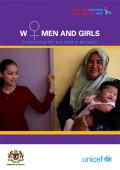
Resource | Publications,
This report grows out of the shared belief by the government and UNICEF that there must be a response to the impending HIV crisis confronting women and girls in Malaysia. Strong political commitment, leadership at the highest level and a multi-sectoral framework are required to address the complex issues affecting women's ability to control and make decisions regarding sexual and reproductive health.
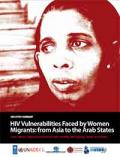
Resource | Publications,
The Arab States are the primary destinations for many migrant workers from various countries in Asia, including Bangladesh, Pakistan, the Philippines, and Sri Lanka. Of these migrants, many are women: in 2005, 59 percent of Sri Lankan migrant workers were women, of which 90 percent were domestic workers, largely in the Arab States. Since 2000, women have comprised 90 percent of yearly deployment of new hires for service workers in the Philippines, of which 30 percent are employed as domestic help. A similar preference for the Arab States is observed in the case of Bangladesh, where between 1991 and 2007, 60 percent of female migrants left to find employment in the Arab States.
By analyzing the economic, socio-cultural, and political factors that influence the HIV vulnerability of migrant workers - especially female migrant workers - the study aims to aid the design of appropriate rights-based HIV prevention programmes. It also is intended to identify emerging challenges and trends in the response to HIV and migration issues in host countries, particularly in the area of human rights and public health.
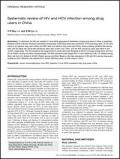
Resource | Publications,
Since the early 1990s, China has witnessed a dramatic, and incremental, increase in the consumption of illicit drugs, according to data from the National Narcotic Control Commission. At the end of 2005, there were 1.16 million registered drug users in China and around 700,000 heroin addicts, which account for 78.3% of total drug users. The most frequent route of drug administration was intravenous injection (50% to 70%). Although ‘chasing the dragon’ (inhalation of drug fumes) (55%) was a common route in initial heroin users, most drug users made the transition to injecting in order to achieve the same effect at lower doses, and to save on overall costs.
Injecting of drugs and sharing of contaminated needles, and other injecting paraphernalia, have resulted in the transmission of HIV, leading to a high prevalence of HIV and AIDS among injecting drug users (IDUs). Hepatitis C virus (HCV) can be transmitted by injection drug use and it has been identified as the most common viral infection affecting IDUs. Co-infection with HIV and HCV is common in certain populations, especially in IDUs.
Information about HIV and HCV infection, and HIV and HCV co-infection was obtained in separate studies but no overall profile of HIV and HCV co-infections and no detailed geographical variation studies in China were found to exist. This systematic review will present a detailed geographical distribution pattern of HIV, HCV infection and HIV and HCV co-infection among drug users of China.





